#nosql mongodb
Explore tagged Tumblr posts
Text
As a dev, can confirm.
I've used multiple dev- or sysadmin-oriented software without understanding what they were for, but they were needed by some other parts of the system.
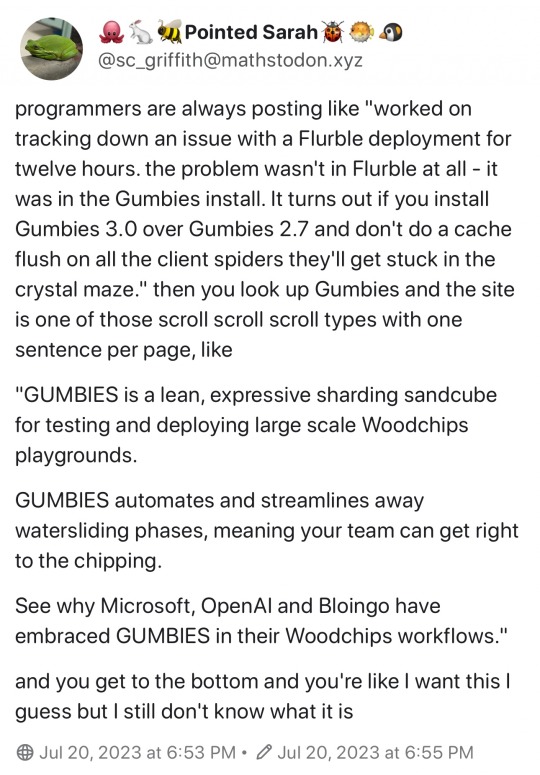
#still not sure what zookeeper does#it's supposedly a vital part of the hadoop ecosystem#we used it for kafka#other things i took a while to get:#mongodb#noSQL#document-based DBs#map-reduce#and so much networking stuff
24K notes
·
View notes
Text
Mongodb connectors
Leverage MongoDB API integration to streamline your data connections with various platforms. The MongoDB connector enables easy integration with NoSQL databases, improving your application’s scalability and efficiency. Learn how to utilize MongoDB connection to power your cloud and on-premise solutions.
Mongodb connectors
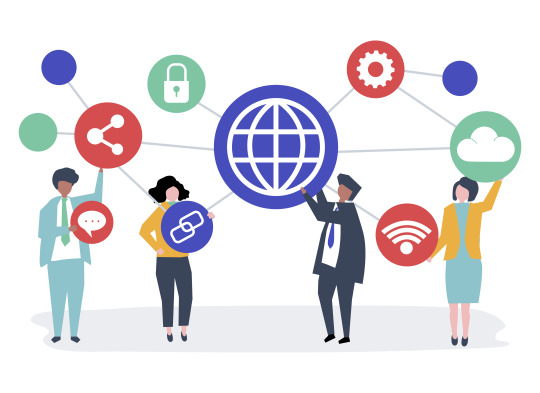
0 notes
Text
Connect ColdFusion to MongoDB or DynamoDB for NoSQL Support
#Connect ColdFusion to MongoDB or DynamoDB for NoSQL Support#Connect ColdFusion to MongoDB or DynamoDB#ColdFusion to MongoDB or DynamoDB for NoSQL Support
0 notes
Text
Unlocking the Skills of a Full Stack Developer
To excel as a full stack developer, embark on a journey that begins with mastering the foundational technologies of web development: HTML, CSS, and JavaScript. These essential skills will empower you to build and style dynamic web pages. Next, immerse yourself in front-end frameworks such as React, Angular, or Vue, which will enable you to create engaging and interactive user experiences.
On the back end, dive into server-side languages like Node.js, Python (utilizing powerful frameworks like Django or Flask), Ruby on Rails, and PHP. Understanding how to leverage databases is equally vital, so familiarize yourself with both SQL (using systems like PostgreSQL and MySQL) and NoSQL options like MongoDB.
A strong grasp of APIs is crucial for modern development, so learn how to create and utilize RESTful services and explore GraphQL for efficient data retrieval. Equip yourself with Git for version control, allowing you to track changes and collaborate seamlessly with others.
Enhance your problem-solving abilities through coding challenges on platforms like LeetCode, and build an impressive portfolio by undertaking personal projects or contributing to open-source initiatives. Embrace a mindset of continuous learning by following industry blogs, enrolling in online courses, and participating in workshops to stay ahead of the curve. There is also a masterclass to help you understand these concepts better.
Don’t overlook the importance of soft skills; effective communication and teamwork are vital in today’s collaborative work environment. Finally, seek out mentorship to guide your development and engage in code reviews to benefit from the insights of experienced developers. By diligently following these steps, you can cultivate the expertise and confidence necessary to thrive as a full stack developer in a competitive landscape.
#FullStackDevelopment#WebDevelopment#HTML#CSS#JavaScript#React#Angular#Vue#NodeJS#Python#Django#Flask#RubyOnRails#PHP#SQL#NoSQL#MongoDB#APIs#RESTfulServices#GraphQL#Git#CodingChallenges#LeetCode#PortfolioBuilding#OpenSource#ContinuousLearning#TechMasterclass#SoftSkills#Communication#Teamwork
1 note
·
View note
Text
Eloquent Filtering Package: Streamlining Query Management in Laravel

#laravel#php#html#css#javascript#webdevelopment#programming#webdeveloper#nodejs#python#java#vuejs#webdesign#mysql#angular#reactjs#android#webdesigner#jquery#js#software#rubyonrails#mongodb#coding#nosql#developer#programmer#codeigniter#wordpress#softwaredeveloper
1 note
·
View note
Text
Bases de Datos Relacionales vs No Relacionales: Diferencias Clave y Qué Necesitas Saber
Introducción
En el mundo del desarrollo de software, las bases de datos juegan un papel crucial en el almacenamiento y gestión de datos. Existen dos categorías principales de bases de datos: relacionales y no relacionales. Cada tipo tiene sus propias características, ventajas y desventajas. En este blog, exploraremos las diferencias clave entre estas dos categorías y qué necesita saber un programador sobre cada una para tomar decisiones informadas.
1. Bases de Datos Relacionales
a) ¿Qué es una Base de Datos Relacional?
Una base de datos relacional (RDBMS, por sus siglas en inglés) organiza los datos en tablas relacionadas entre sí mediante claves primarias y foráneas. Utiliza el lenguaje SQL (Structured Query Language) para la gestión y consulta de datos.
b) Características Clave:
Estructura Tabular: Los datos se almacenan en tablas con filas y columnas. Cada tabla representa una entidad, y cada fila una instancia de esa entidad.
Relaciones entre Tablas: Las tablas pueden estar relacionadas entre sí mediante claves primarias y foráneas.
Transacciones ACID: Asegura que las transacciones sean Atómicas, Consistentes, Aisladas y Duraderas, garantizando la integridad de los datos.
c) Ventajas:
Integridad de Datos: Garantiza la precisión y consistencia de los datos mediante restricciones y reglas.
Consultas Complejas: El lenguaje SQL permite realizar consultas complejas y combinaciones de datos.
Escalabilidad Vertical: Se pueden aumentar los recursos del servidor para manejar mayores cargas de trabajo.
d) Desventajas:
Escalabilidad Horizontal Limitada: Puede ser más difícil escalar horizontalmente (distribuir datos en múltiples servidores).
Rigidez del Esquema: Requiere un esquema fijo, lo que puede hacer que los cambios en la estructura de datos sean complicados.
e) Ejemplos Populares:
MySQL: Amplamente utilizado en aplicaciones web y sistemas de gestión de contenido.
PostgreSQL: Conocido por su robustez y cumplimiento de estándares SQL.
Microsoft SQL Server: Ofrece herramientas avanzadas de análisis y administración de datos.
Oracle Database: Ampliamente utilizado en grandes empresas por su escalabilidad y características avanzadas.
2. Bases de Datos No Relacionales
a) ¿Qué es una Base de Datos No Relacional?
Las bases de datos no relacionales (NoSQL) están diseñadas para manejar grandes volúmenes de datos no estructurados o semi-estructurados. No utilizan un esquema fijo y pueden almacenar datos en varios formatos, como documentos, pares clave-valor, columnas o grafos.
b) Características Clave:
Flexibilidad del Esquema: No requieren un esquema fijo, permitiendo la adaptación de datos según sea necesario.
Escalabilidad Horizontal: Diseñadas para escalar horizontalmente mediante la distribución de datos en múltiples servidores.
Tipos de Datos Diversos: Pueden manejar datos en formatos como JSON, XML, o BSON.
c) Ventajas:
Escalabilidad Horizontal: Fácil de escalar distribuyendo datos en múltiples servidores.
Flexibilidad del Esquema: Permite agregar y modificar datos sin necesidad de un esquema rígido.
Alto Rendimiento: Adecuado para aplicaciones con grandes volúmenes de datos y requisitos de alta disponibilidad.
d) Desventajas:
Consistencia Eventual: En algunos casos, las bases de datos NoSQL sacrifican la consistencia inmediata en favor de la disponibilidad y particionamiento.
Consultas Limitadas: La capacidad de realizar consultas complejas puede ser limitada en comparación con SQL.
e) Ejemplos Populares:
MongoDB: Una base de datos orientada a documentos que utiliza JSON-like para el almacenamiento de datos.
Cassandra: Una base de datos orientada a columnas, conocida por su escalabilidad y disponibilidad.
Redis: Una base de datos en memoria basada en pares clave-valor, utilizada para almacenamiento en caché y procesamiento en tiempo real.
Neo4j: Una base de datos orientada a grafos que permite consultas sobre relaciones entre datos.
3. Cuándo Usar Cada Tipo de Base de Datos
a) Bases de Datos Relacionales:
Aplicaciones Transaccionales: Cuando la integridad y consistencia de los datos son críticas, como en sistemas financieros o de gestión de inventarios.
Consultas Complejas: Si necesitas realizar consultas complejas o combinaciones de datos con SQL.
Aplicaciones con Esquema Fijo: Cuando el esquema de los datos es estable y no se espera que cambie con frecuencia.
b) Bases de Datos No Relacionales:
Big Data y Aplicaciones Web: Para manejar grandes volúmenes de datos y aplicaciones que requieren alta disponibilidad y rendimiento.
Datos No Estructurados: Cuando trabajas con datos no estructurados o semi-estructurados, como contenido de redes sociales o datos de sensores.
Escalabilidad: Si tu aplicación requiere escalar horizontalmente para manejar un crecimiento rápido en la carga de trabajo.
4. Recursos Adicionales
Documentación y Tutoriales:
Documentación de MySQL
Documentación de MongoDB
Tutorial de PostgreSQL
Introducción a NoSQL
Libros Recomendados:
“SQL: El lenguaje de consulta estructurado” de Jesús García
“MongoDB: The Definitive Guide” de Kristina Chodorow (en inglés)
“Designing Data-Intensive Applications” de Martin Kleppmann (en inglés)
Conclusión
Entender las diferencias entre bases de datos relacionales y no relacionales es esencial para elegir la solución adecuada para tus proyectos de desarrollo. Las bases de datos relacionales son ideales para aplicaciones que requieren integridad y consultas complejas, mientras que las bases de datos no relacionales ofrecen flexibilidad y escalabilidad para manejar grandes volúmenes de datos. Conociendo las características y ventajas de cada tipo, puedes tomar decisiones más informadas y construir aplicaciones más efectivas.
#basesdedatos#relacionalvsnorelacional#SQL#NoSQL#MongoDB#MySQL#PostgreSQL#Cassandra#Redis#Neo4j#diferenciasdedatos#programación#desarrollodesoftware#databases#almacenamientodedatos#consultasdedatos#esquemasdedatos#scalabilidad
0 notes
Text
Master MongoDB with Confidence with Online MongoDB Course! 🚀
The Cyber Success Institute offers a 21-days Online MongoDB Course with Certification designed for MongoDB enthusiasts. Learn from the best and elevate your database skills.
📅 Starting From: 12th August 2024 ⏰ Time: 7:30 PM to 9:00 PM
🌐 To know more in detail visit us at, 👉 https://bootcamp.cybersuccess.biz/online-mongodb-course/
📱 Contact us on, 📲 77094 45407 📲 7620686761
🔥Transform Your Career with MongoDB! Seize The Opportunity Today! 🏆✌
0 notes
Text
New Trick – Organizing Prisma Models with the MERN Stack – Prisma #16
In this blog, we will explore “New Trick – Organizing Prisma Models with the MERN Stack”. Here, you will learn how to split and organize Prisma models, enums & types from the prisma.schema file into multiple files and import predefined data from JSON files. Let’s dive in and check it out:
#prisma#mongodb#reactjs#react#mern#mernstack#nosql#javascript#js#nodejs#npm#prismaorm#orm#database#redundancy#highavailability#replica#replicaset#developers#developer#software#softwaredeveloper#programming#programminglanguage#javascriptprogramming#advancedjavascript#techtrick#trick
0 notes
Text

MongoDB Interview Questions . . Can you achieve primary key - foreign key relationships in MongoDB? . . . . for more information, questions and the tutorial https://bit.ly/3T2jaaP check the above link
#mongodb#dbms#rdbms#nosql#sql#database#data#mysql#oracle#programming#computer#computerscience#computerengineering#javatpoint
0 notes
Text

While building enterprise systems, choosing between SQL and NoSQL databases is a pivotal decision for architects and product owners.
It affects the overall application architecture and data flow, and also how we conceptually view and process various entities in our business processes.
Today, we’ll delve into MongoDB, a prominent NoSQL database, and discuss what it is, and when it can be a good choice for your data storage needs.
0 notes
Text

Explore the comparison between Postgres and MongoDB for your NoSQL database needs. Discover how each database handles data storage, validation, performance, and more to make an informed choice for your specific requirements.
More at: https://www.aptuz.com/blog/is-postgres-nosql-better-than-mongodb/
0 notes
Video
youtube
Create Book Store Microservices with MongoDB using Nodejs Express & Mong...
Full Video Link https://youtu.be/SkOb1ruIUY0
Hello friends, new #video on #nodejs #microservices with #mongodb #tutorial for #api #developer #programmers with #examples is published on #codeonedigest #youtube channel.
@java #java #aws #awscloud @awscloud @AWSCloudIndia #salesforce #Cloud #CloudComputing @YouTube #youtube #azure #msazure #nodejsmicroservice #nodejsmicroservicestutorial #nodejsmicroservicearchitecture #nodejsmicroserviceproject #nodejsmicroserviceexample #nodejsmicroservicesinterviewquestions #nodejsmicroserviceframework #mongodb #nodejsmongodbtutorial #nodejsmongoose #nodejsmongooseconnection #nodejsmongooseexpress #nodejsmongooseschema #nodejsmongodb #nodejsmongodb #nodejsexpress #nodejsexpressapitutorial #nodejsexpressproject #nodejsexpressapi #nodejsexpressapiproject #nodejsexpresstutorial #nodejsexpresscourse #nodejsexpressrestapi #nodejsexpresscrashcourse #nodejsexpressapplication
#youtube#nodejs#node js#nodejs microservice#nodejs microservice mongodb#nodejs express#nodejs mongoose#mongodb#nosql db#nosql database#database
1 note
·
View note
Text

TechnoMaster provides excellent Mango DB course online. MongoDB is a distributed database. It is very simple and easy to use. MongoDB training will help you learn the foremost document-oriented NoSQL database, scheme design, modeling of data, MongoDB Architecture, CRUD, and also indexing by utilizing real-life case studies. TechnoMaster Training Institute is providing MongoDB Training in Dubai for interested candidates who want to learn and master the course in quick time. Our expert assistance for this certification course is immense. We can provide complete assistance to help you have the career of your dreams in the shortest time possible. We give training on industry-based projects so various domains so that effective learning is possible.
For more details on the availability of our Training Program. Click Below:-
Mongo DB Online Training in Dubai
To become an expert MongoDB developer, you have to be at the top of your skill. We help you gain in-depth skills in NoSQL, data modeling, query, information replication, and many more. To be an expert in each topic requires you to set new benchmarks in your career. After getting trained with us, when you join a company, you can do a range of things that others can’t even dare to do. We will give you that professional exposure so that you will set high standards in your career. So, there should not be any more doubts to join our institute. Just reach our experts straightaway to join our training institute.
TechnoMaster (the training division of Nestsoft Technologies, a Kerala based online IT training institute) has been instrumental in shaping the lives of over 10,000 students who attended our IT training programmes since 2001. We provide short term, crash and long term online / offline IT courses on all IT technologies with real time internships at convenient schedules and reasonable fees.
Through our job portal (Jobs Near ME) we aim at helping you get placement in Chennai, Mumbai, Cochin, Infopark, Technopark, Cyberpark, Bengalaru, Delhi, United Arab Emirates (UAE), USA, UK, Australia, Canada, Germany, Ireland, Singapore, Switzerland, Kuwait, Saudi Arabia, Bahrain, Qatar, Oman etc.
#MongoDB#data modelling#NoSQL database#Scheme design#Mongo DB Architecture#best it training institute#best online training#best course in 2023#best institute in uae#best internship in uae#technomaster in uae#internship
1 note
·
View note
Text
Technology Stacks in Software Development

Have you ever been curious about how your favourite apps or websites are created? The process begins with selecting the appropriate technology stack!
I like to think of a technology stack as being like a recipe for making a cake (I love cakes, especially strawberry-flavoured ones). A technology stack is a set of tools and programming languages that developers use to create software applications. And just like how a cake recipe can use different ingredients, different technology stacks can use different programming languages, frameworks, and databases to build apps and websites.
So, what are some popular technology stacks that developers use? Let's review them~!

The specific combination of technologies that make up a stack can vary depending on the needs of the application, but here are some common technology stacks in software development:
LAMP Stack
This is a popular open-source stack that includes Linux as the operating system, Apache as the web server, MySQL as the database, and PHP as the programming language.
MEAN Stack
This is a stack that uses MongoDB as the NoSQL database, Express as the web framework, AngularJS as the frontend framework, and Node.js as the backend runtime.
MERN Stack
This is a stack that uses MongoDB as the NoSQL database, Express as the web framework, React as the frontend library, and Node.js as the backend runtime.
Ruby on Rails Stack
This is a stack that uses the Ruby programming language, the Rails framework, and a variety of tools and libraries to build web applications.
Java Stack
This is a stack that uses Java as the programming language, Spring as the web framework, and a variety of tools and libraries to build web applications.
.NET Stack
This is a stack that uses the .NET framework, C# as the programming language, and a variety of tools and libraries to build web applications.
Python Stack
This is a stack that uses Python as the programming language, Django as the web framework, and a variety of tools and libraries to build web applications.

“Do you have experience with this stack?”
If you're actively looking at job listings for developers, you might have seen 'MERN' or 'LAMP', etc in the job description. Companies often prefer to hire developers who have experience with specific technology stacks, as different stacks may have unique requirements and work better for certain projects.
It also ensures consistency across their applications and infrastructure. This gives developers an advantage in their job search, but it's important to remain adaptable and continue learning new technologies as the tech industry evolves.

Thanks for reading!! I tried super hard to condense what I learnt from the youtube videos I watch about technology stacks into a single post! Hope you learnt something new! 👏🏾💻💗
#xc: programming blog post#resources#codeblr#progblr#studyblr#coding#programming#studying#computer science#comp sci#technology#tech#software developer#programmer#coding resources#studyblr community#student#coding study#career advice#career#my resources
110 notes
·
View notes
Text
What is Mern stack And Its importance? Before that I will Tell you the best institute for Mern stack course in Chandigarh.

What is Mern stack?
MERN Stack is a popular JavaScript-based technology stack used for building full-stack web applications. It consists of four key technologies:
MongoDB: A NoSQL database that stores data in a flexible, JSON-like format.
Express.js: A lightweight and fast backend framework for Node.js.
React.js: A front-end JavaScript library for building user interfaces.
Node.js: A runtime environment that allows JavaScript to run on the server side.

Importance of Mern Stack :
Full-Stack JavaScript – Uses JavaScript for frontend and backend, simplifying development.
High Performance – Node.js ensures fast, scalable applications.
Cost-Effective – Open-source, reducing development costs.
Rapid Development – React’s reusable components speed up UI building.
Flexibility – Suitable for web apps, SPAs, eCommerce, and real-time applications.
Scalability – MongoDB handles large data efficiently.
Strong Community Support – Large developer base ensures continuous updates and support.
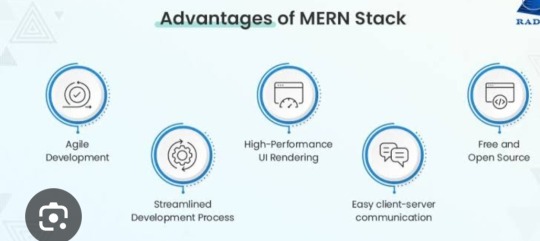
Now i will tell you the best institute for Mern stack course in Chandigarh .
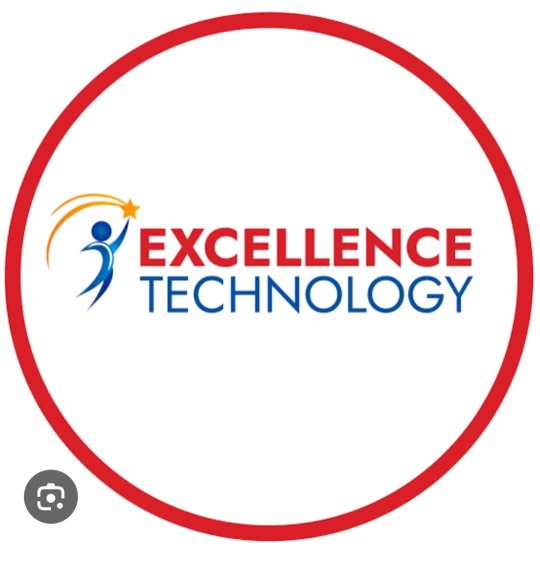
Excellence Technology is a leading EdTech (Educational technology) company dedicated to empowering individuals with cutting -edge IT skills and bridging the gap between education and industry demands. Specializing in IT training ,carrer development, and placement assistance ,the company equipts learners with the technical expertise and practical experience needed to thrive in today's competitive tech landscape. We provide IT courses like python ,Full stack Development, Web Design ,Graphic Design and Digital Marketing.
Contact Us for more details: 93177-88822
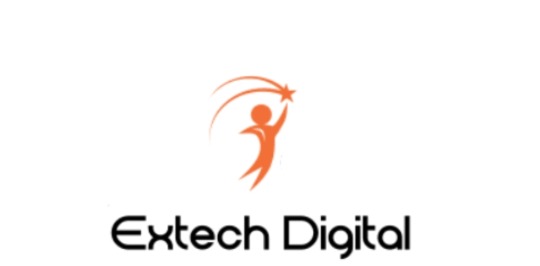
Extech Digital is a leading software development company dedicated to empowering individuals with cutting -edge IT skills and bridging the gap between education and industry demands. Specializing in IT training ,carrer development, and placement assistance ,the company equipt learners with the technical expertise and practical experience needed to thrive in today's competitive tech landscape. e provide IT courses like Python ,Full stack Development, Web Design ,Graphic Design and Digital Marketing.
Contact Us for more details: 93177-88822

Excellence academy is a leading software development company dedicated to empowering individual with cutting edge IT skills and bridging the gap between education and industry demands.specializing in IT training, career development, and placement assistance, the company equits learners with the technical expertise and practical experience needed to thrive in today's landscape. We provide IT courses like python, full stack development,Web design, and Digital marketing.
Contact Us for more details: 93177-88822
About Author
Nikita Thakur
Mern stack AI Developer/ 2+ years of experience
Excellence technology
Professional summary
Nikita thakur is a skilled MERN Stack AI Developer with over 2 years of experience at Excellence Technology. Proficient in MongoDB, Express.js, React.js, and Node.js, she integrates AI solutions to build scalable, high-performance web applications. Nikita excels in developing innovative solutions, enhancing user experiences, and driving business growth through technology.
2 notes
·
View notes
Text
Binance clone script — Overview by BlockchainX
A Binance Clone Script is a pre-built, customizable software solution that replicates Binance's features, connect with BlockchainX
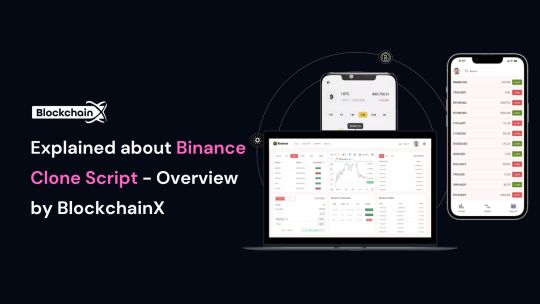
What is Binance Clone Script
A Binance clone script refers to the ready-made solution of the Binance platform that deals with core functions parallel to the widely acclaimed cryptocurrency exchange platform associated with Binance. It enables companies to establish their own platforms like Binance, perfectly parameterized in terms of functionality and user interface of world-famous exchanges. The clone script provides display flexibility with built-in functionality such as spot trading software, futures trading configurations, and wallet systems that are extremely secure.
Basically, it reduces development costs and latency because things like these are already built. And as this is a startup for many young entrepreneurs, they can have saved on their capital to expand or grow their business.
The script is blessed as its feature set caters to future demands in the field. One can enjoy a safe trading experience to customers while ensuring that every peculiarity of Binance’s success opens up to investors of the script.
How does the Binance clone script work?
The Binance clone script works to provide a ready-made platform that replicates Binance’s core features, such as user registration, wallet management, trade and enables users to create accounts, deposit or withdraw cryptocurrency, and trade digital assets through an interface easily and safely. The platform supports various trading methods such as market orders, limit orders and forward trading. It has built-in security features like two-factor authentication (2FA) to save the user money. Admin dashboards allow platform owners to manage users, manage tasks, and set up billing. The script can be tailored to your brand, connecting liquidity sources to make trading more efficient. In short, the Binance clone script provides everything needed to create a fully functional crypto exchange.
key features of a Binance Clone Script
The key features of a Binance Clone Script are designed to make your cryptocurrency exchange platform secure, user-friendly, and fully functional. Here’s a simple overview of these features:
User-Friendly Interface
Multi-Currency Support
Advanced Trading Engine
Secure Wallet System
KYC/AML Integration
Admin Dashboard
Security Features
Trading Options
These features help ensure that your Binance-like exchange is efficient, secure, and ready for the growing crypto market.
Technology Stack Used by BlockchainX
Technology stack used for developing the Binance clone script involves the most advanced technology combination that ensures that the platform must have so much security, scalability, and performance to make it a platform that is secure, scalable, and high-performance as well. Here are a few key technologies and their brief descriptions:
Blockchain Technology:
The underlying part of the cryptocurrency exchange is Blockchain because it ensures the safe and decentralized processing of transactions.
Normally executed on either Ethereum or BSC (Binance Smart Chain) to carry out smart contracts and token transfers.
Programming Languages:
Frontend: For frontend, React or Angular could be engaged in actualization of the user interface leading to a responsive and interactive experience on the various devices.
Backend: In backend, languages like Node.js, Python, or Ruby on Rails can be applied on how internal logic is being run by server and arbitration of user interaction with the module is foremost.
Databases:
These two databases, MySQL or Postgresql, are typically used in user information storage, transaction records, and other exchange information.
NoSQL such as MongoDB or other databases might be used for horizontal scalability and high-volume transaction storage.
Smart Contracts:
It is used to generate and send out smart contracts for auto-trading, token generation, and other decentralized functionalities.
Blockchain Wallets:
Fundamentally, this automatically links famous wallet systems such as MetaMask, Trust Wallet, or Ledger for the secure storage and transactions of cryptocurrency.
Advantages of using a Binance Clone Script
Here are the advantages of using a Binance Clone Script:
Faster Time-to-Market
Cost-Effective
Customizable Features
Liquidity Integration
Multiple Trading Options
So, when entering the marketplace of the cryptocurrencies it would be the most possible work of something to pay off at a rapid pace: the Binance Clone Script proves so.
How to Get Started with BlockchainX’s Binance Clone Script
It is quite a straightforward process to begin working with a BlockchainX Binance Clone Script-this involves the first step of getting in touch with the company for an initial consulting period to understand more about what you require, need, or customize for the site, and what your goals are. When BlockchainX has an understanding of your needs, they offer a detailed list of what a proposal would entail before they can start the work; afterward, they will estimate the costs needed to do the project. Once both sides accept both the presentations and all features and timelines are agreed with, BlockchainX starts working on the development process of building a Binance Clone Script tailored to the brand, user interface, and other features.
After the entire platform is created, it passes through severe testing to ensure that everything functions excellently. Deployment follows the thorough test. BlockchainX customizes your user interface and more extensions, after deployment. BlockchainX also commits to supporting and sustaining your exchange so that it runs successfully and securely.
Conclusion:
At the end, your confusion may as well be cut short. Yes, the Binance Clone Script will be a resilient solution to spark up the exchange platforms synthesizing user-generated cryptocurrency dreams in the blockchain, even without bankroll when it comes to developing the app. Turning with BlockchainX expertise, you can make an adjustment and scale a powerful platform stocked with the likes of Binance that produced Blockchains, while still containing some specific set-ups for your masterpiece. More amazing features are exclusive to the clone script, moreover, such as support for multiple currencies, high-end security, real-time data, and a smooth user interface that completes the trading process for your users without any glitch.
This solution gives easy access to ready-made solutions. It could have quality Depending on the time you conveniently let BlockchainX’s be and use both exchanges or any variation of the two permutations. After all, who decides to couple up with a one-experienced Crypto Exchange developer who is struggling to offer anything new.
#binance clone script#binance clone script development#binance clone script development service#blockchain technology#blockchain#cryptocurrency#cryptocurrencies
2 notes
·
View notes